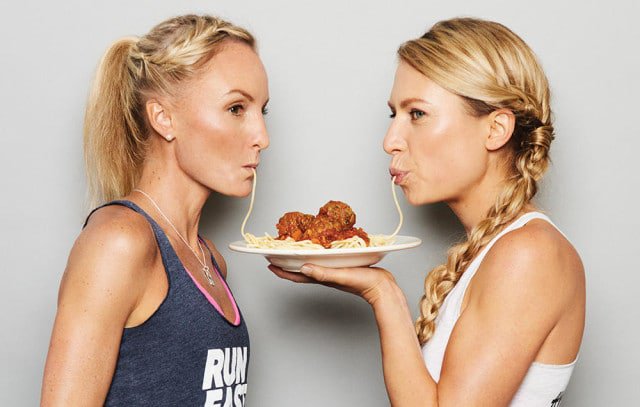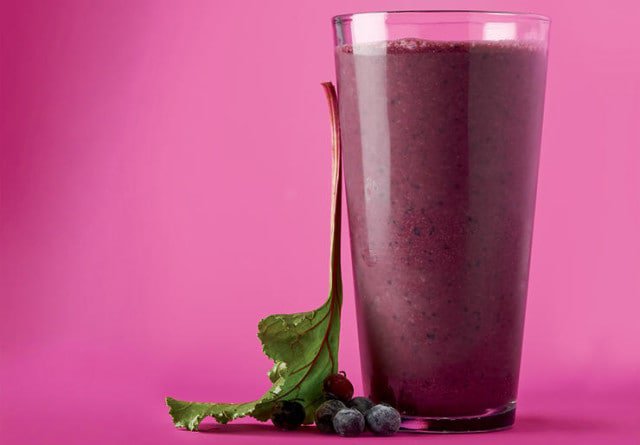Run Fast, Eat Slow!
In their new book, two runner friends – one a fit mom and trained chef , the other an Olympian who loves her food – explain how to watch your times and weight drop by nourishing your hardworking body with unprocessed whole foods, local fresh produce, and organic meat. Bonus: the recipes are delish!
In their new book, two runner friends – one a fit mom and trained chef , the other an Olympian who loves her food – explain how to watch your times and weight drop by nourishing your hardworking body with unprocessed whole foods, local fresh produce, and organic meat. Bonus: the recipes are delish! – By Shalane Flanagan and Elyse Kopecky

We all know what ‘run fast’ means, right? Kick some @#*! It means not just surviving, but also thriving, in our insanely fast-paced lifestyles that don’t seem conducive to having the time (or energy)
to cook.
But what do we mean by ‘eat slow’? It represents a way of eating that includes preparing nourishing meals from scratch, sitting down at a table instead of eating on the go, enjoying food in the company of friends and family, seeking out foods that were grown or raised with care, and tuning in to what our bodies need to thrive.
Although runners are often put on a pedestal as the epitome of fitness, we know all too well that we are not immune to serious health issues. Convenience foods, including bars, gels, and sports drinks, not only lack real nutrition, but they’re also high in refined grains, processed sweeteners, industrial oils, and artificial ingredients. For runners who are constantly breaking down their bodies during intense training sessions, nutrient-dense foods are critical to faster recovery times.
“When coaches and athletes are asked what is the major contributor to good athletic performance, they often say things like VO2 max, training load, or a particular type of training,” says Dr Ron Thompson, co-author of Eating Disorders in Sport. “But a major contributor to good athletic performance is good health, and the major contributor to good health (other than genetics) is good nutrition. The well-nourished athlete will not only perform better, but will perform better for longer.”
Shalane and I have shared a love of good food since we met in 2000 as anxious newbies on the cross-country team at varsity. (Although our definition of ‘good’ has definitely evolved over the years!) After graduation we both moved to another city – Shalane to run for Nike, me to work for Nike Running – so our paths had stayed very much intertwined until I moved abroad, and then came back home to attend culinary school. In August 2013, we reunited – over a meal, naturally!
‘Indulgent nourishment’ is how we define our way of eating. We know our hardworking bodies need substantial fuel, so we indulge in our favourite whole foods. By filling up on the healthful foods we love and not obsessing over kilojoule counts, carbs, or fat, we’re able to eat in tune with what our bodies need. Real food allows the body to function optimally without weight gain.
All of our recipes were crafted to maximise flavour and nutrition and to minimise inflammation, digestive distress, and toxins. They were vetted by an incredible team of runners, including a high-school cross-country runner, an ultra-marathoner-CEO, a physicist, a running-shop owner, a breast cancer oncologist, and a dad inspired to cook more healthily for his active family.
Best of all, Shalane – despite her crazy training and travel schedule – road-tested every single recipe. She found that her racing weight came naturally – no deprivation needed. She was enjoying food more than ever, and was recovering faster from her gruelling 38-kilometre training runs at 2 100 metres. Shalane went on to run a PB in the marathon, break her own American 10-K road record, and qualify for her fourth US Olympic team in the marathon.
WHAT’S ON TODAY’S MENU?
Lots of fresh, whole foods for every meal and snack
When deciding what to eat to eat well, it’s best to look at the full picture, including where the food came from, how it was grown, how much it was processed, how it tastes, and, most importantly, how it makes you feel. For us that means eating a varied diet that includes meat, veggies, fruit, cultured dairy, legumes, whole grains, nuts, and seeds. We seek out organic and local ingredients as much as possible and enjoy eating with the seasons, since food picked at its peak not only tastes better, but is also more nutrient-dense.
We don’t eat meat every day, but we do believe it’s healthy to include on a regular basis. In many of our dishes, the veggies shine and meat becomes the loyal side companion. As much as possible, we try to get our meat from trusted local farmers who care about the planet. The free-range chicken, beef, ostrich, and lamb we buy is expensive, but our philosophy is to eat better-quality meat and less of it, for maximum nourishment.
BREAKFAST – CAN’T BEET ME SMOOTHIE

Makes 2 servings
1 cooked beetroot, peeled and quartered
1 cup frozen blueberries
1 small frozen banana
1 cup unsweetened almond milk or other milk of choice
1 cup coconut water
2.5-cm knob fresh ginger, peeled
1 Tbsp. almond butter
– Place the beetroot, blueberries, banana, milk, coconut water, ginger, and almond butter in a blender. – Blend on high speed for several minutes until smooth.
READ MORE ON: diet food healthy run-faster weight loss



